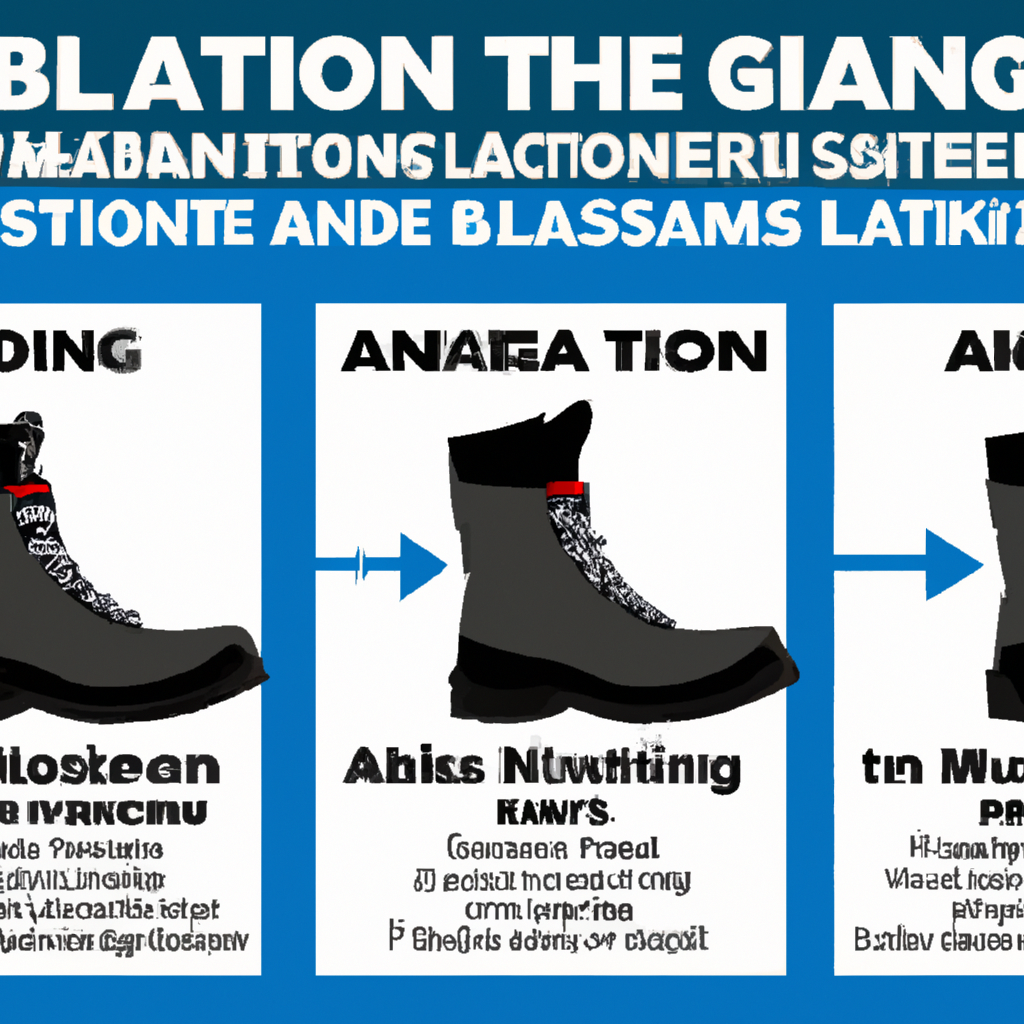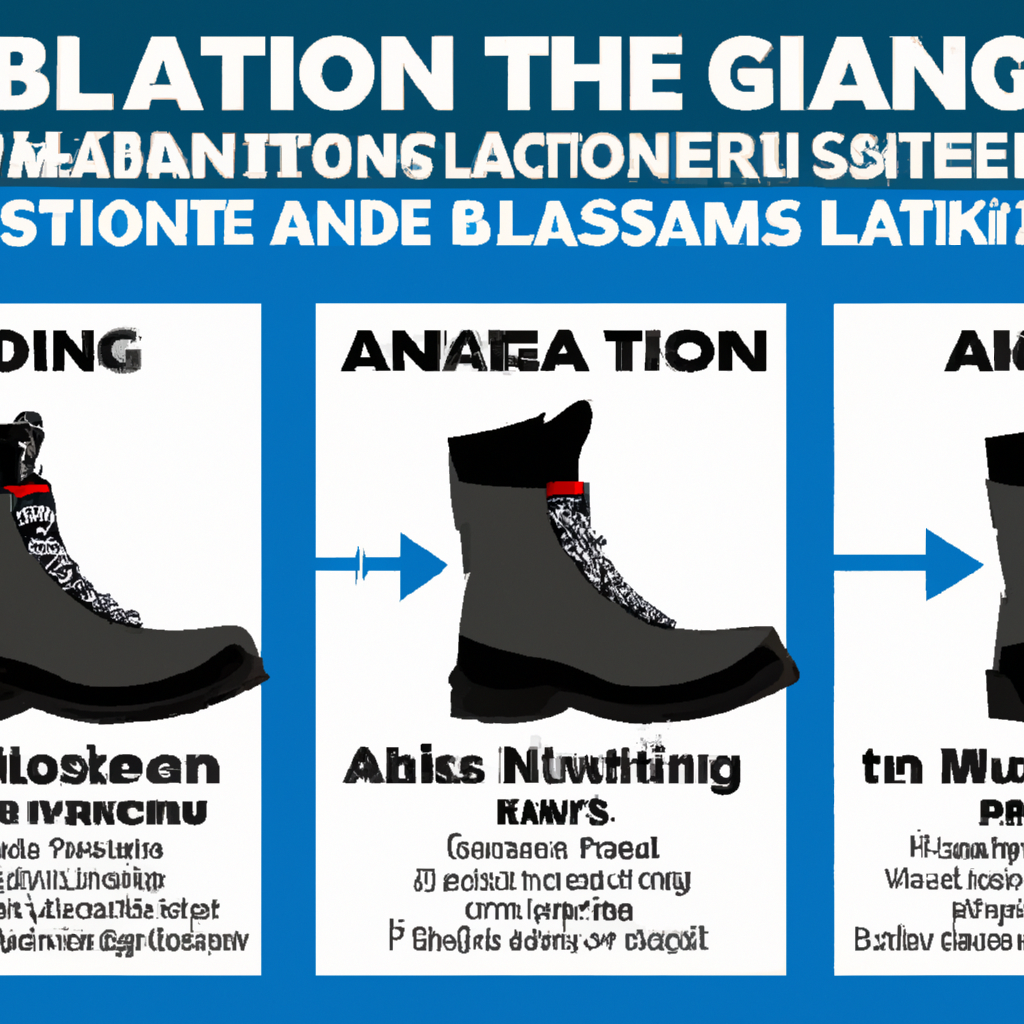Have you ever wondered if linemen can wear steel toe boots? Well, the answer may surprise you! Steel toe boots are not only perfect for protecting your feet in hazardous work environments, but they also provide the necessary support and stability for linemen to carry out their tasks effectively. In this article, we will explore the benefits of steel toe boots for linemen and debunk any misconceptions surrounding their use. So, whether you’re a lineman looking for the perfect footwear or simply curious about the topic, keep reading to discover why steel toe boots are a fantastic option for linemen!

Overview
Importance of the right footwear
As a lineman, your job requires you to work in potentially hazardous conditions, often involving electricity and heavy equipment. In such environments, the right footwear is of utmost importance to ensure your safety. Steel toe boots play a crucial role in protecting your feet from potential injuries and hazards. They are specifically designed to provide a sturdy and reliable barrier between your feet and the dangers you may encounter in the field.
What are steel toe boots?
Definition of steel toe boots
Steel toe boots, also known as safety boots or steel-capped boots, are a type of footwear designed with a reinforced toe box made of steel. This steel component ensures that the boots are capable of providing protection against impact and compression hazards.
How they are designed to protect
The primary purpose of steel toe boots is to protect your toes from injuries caused by heavy objects falling or rolling onto your feet. The steel cap in the front of the boot acts as a shield, absorbing and dispersing the force of impact. This design feature greatly reduces the risk of fractures or amputations that may occur in such circumstances.
Hazards faced by linemen
Electrical hazards
As a lineman, one of the most significant hazards you face is electrical shock. This can occur when working with live wires or in situations where there is a risk of coming into contact with an electrical current. The potential for electrical conductivity in steel toe boots can be a concern in such scenarios.
Falling objects
Working in the field often involves heavy machinery, tools, and equipment. These items pose a risk of falling or rolling onto your feet, causing severe injuries. Protecting your toes from these potential hazards is crucial to ensure your safety and ability to perform your job effectively.
Slips and falls
Linemen often work on various terrains, including wet or slippery surfaces. Maintaining stability and traction is essential to prevent slips and falls, which can lead to not only injuries but also potential accidents involving electricity.
Protection offered by steel toe boots
Impact protection
The robust steel cap of these boots provides excellent impact protection. By distributing the force of impact across a wider area, steel toe boots reduce the likelihood of serious injuries caused by falling objects. This protection can be invaluable in hazardous work environments where the risk of heavy objects is prevalent.
Compression protection
In addition to impact protection, steel toe boots offer compression protection. They are designed to withstand high levels of pressure, protecting your feet from being crushed by heavy machinery or equipment. This feature is crucial for linemen working in areas with potential crushing hazards.
Other safety features
Apart from the steel toe cap, many steel toe boots also come equipped with additional safety features. These may include puncture-resistant soles and shanks to protect your feet from sharp objects, as well as electrical hazard protection to minimize the risk of electric shock.

Safety standards and certifications
ASTM standards
To ensure the quality and safety of steel toe boots, they are subject to certain standards set by the American Society for Testing and Materials (ASTM). ASTM F2413 is the specific standard for protective footwear, including steel toe boots. Compliance with these standards ensures that the boots meet the necessary requirements for impact protection, compression resistance, and electrical conductivity.
OSHA requirements
The Occupational Safety and Health Administration (OSHA) also outlines specific requirements for footwear in various industries, including those involving electrical hazards. While OSHA does not specifically mandate steel toe boots, they require employers to provide employees with appropriate protective footwear based on the hazards present in the workplace. Steel toe boots often fulfill these requirements due to their superior protection capabilities.
Comfort and functionality
Weight and mobility
While safety is a top priority, comfort and functionality are also essential factors to consider when choosing the right footwear. Steel toe boots can be relatively heavy compared to regular work boots, primarily due to the steel component in the toe box. However, advancements in technology have led to the development of lighter steel toe boots that offer improved mobility and reduced fatigue during long workdays.
Insulation and breathability
Climate conditions can greatly impact your job as a lineman. Steel toe boots are available in a range of insulation levels, allowing you to choose a pair that suits the weather conditions you typically encounter. Some steel toe boots also feature breathable materials and moisture-wicking properties, ensuring your feet remain comfortable and dry even in hot and humid environments.
Non-slip soles
Linemen often work in unpredictable and challenging environments, including wet or slippery surfaces. To prevent slips and falls, many steel toe boots feature non-slip soles with excellent traction. These soles are designed to provide a secure grip, enhancing your stability and reducing the risk of accidents.
Potential drawbacks of steel toe boots
Electrical conductivity
One potential drawback of steel toe boots when it comes to linemen is their electrical conductivity. Since steel is a conductive material, steel toe boots can pose a risk in certain electrical environments. However, it is essential to note that many modern steel toe boots are designed with electrical hazard protection features to minimize this risk.
Weight and fatigue
Steel toe boots can be heavier compared to regular work boots due to the steel component in the toe box. This added weight may lead to fatigue, especially during long workdays. However, as mentioned earlier, advancements in technology have led to the development of lighter steel toe boots, which strive to address this concern and provide increased comfort and reduced fatigue.
Alternatives to steel toe boots
Composite toe boots
Composite toe boots are a popular alternative to steel toe boots, especially for individuals who work in environments with electrical hazards. Instead of steel, the toe cap in composite toe boots is made from non-metallic materials such as carbon fiber or Kevlar. This makes them non-conductive, providing electrical hazard protection while still offering excellent impact and compression resistance.
Metatarsal boots
Metatarsal boots, also known as met guards, are another alternative to steel toe boots. These boots feature additional protection for the metatarsal bones, which are the long bones in the mid-foot region. Metatarsal boots offer comprehensive foot protection by combining a sturdy steel toe cap, metatarsal guard, and impact-absorbing materials. They provide excellent safety, particularly in industries with high risks of crushing injuries.
Considerations for linemen
Work environment
When determining whether steel toe boots are suitable for you as a lineman, it is essential to assess your specific work environment. Consider the types of hazards you encounter on a daily basis, such as the risk of falling objects, electrical shock, or slips and falls. Understanding the specific dangers you face will help you determine whether steel toe boots provide the necessary protection for your job.
Job responsibilities
Different linemen may have varying job responsibilities that can affect the need for steel toe boots. Some linemen focus primarily on electrical maintenance and repairs, while others may be involved in construction or heavy equipment operation. Assessing your specific role will help you determine the level of protection required and whether steel toe boots are appropriate for your tasks.
Personal preferences
Lastly, consider your personal preferences when choosing the right footwear. While safety is paramount, your comfort and satisfaction with your boots should not be overlooked. Try on different styles and brands of steel toe boots, considering factors such as fit, support, and cushioning. Remember that finding the right pair of boots that strike a balance between safety and comfort is essential for performing your job effectively.
Conclusion
As a lineman, your safety should always be a top priority, and having the right footwear is critical to protecting yourself from potential hazards. Steel toe boots offer excellent impact and compression protection, making them a popular choice for linemen. However, it is important to consider factors such as electrical conductivity, weight, and personal preferences when selecting the appropriate footwear. Alternatives like composite toe boots and metatarsal boots can also be considered based on your specific needs. By carefully assessing your work environment and job responsibilities, you can make an informed decision that balances safety and comfort, ensuring you can perform your duties with confidence and peace of mind.




